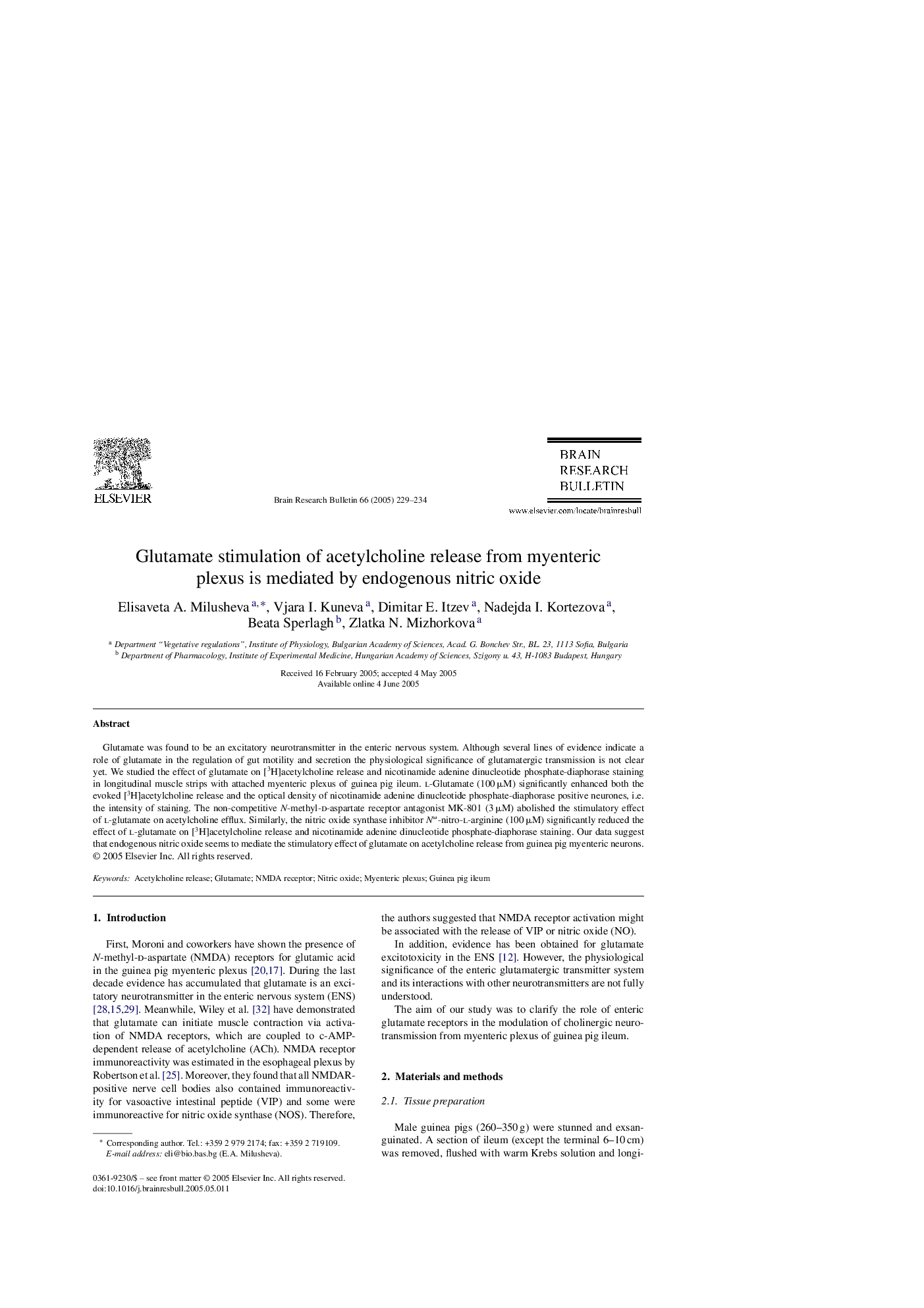| Article ID | Journal | Published Year | Pages | File Type |
|---|---|---|---|---|
| 9409515 | Brain Research Bulletin | 2005 | 6 Pages |
Abstract
Glutamate was found to be an excitatory neurotransmitter in the enteric nervous system. Although several lines of evidence indicate a role of glutamate in the regulation of gut motility and secretion the physiological significance of glutamatergic transmission is not clear yet. We studied the effect of glutamate on [3H]acetylcholine release and nicotinamide adenine dinucleotide phosphate-diaphorase staining in longitudinal muscle strips with attached myenteric plexus of guinea pig ileum. l-Glutamate (100 μM) significantly enhanced both the evoked [3H]acetylcholine release and the optical density of nicotinamide adenine dinucleotide phosphate-diaphorase positive neurones, i.e. the intensity of staining. The non-competitive N-methyl-d-aspartate receptor antagonist MK-801 (3 μM) abolished the stimulatory effect of l-glutamate on acetylcholine efflux. Similarly, the nitric oxide synthase inhibitor NÏ-nitro-l-arginine (100 μM) significantly reduced the effect of l-glutamate on [3H]acetylcholine release and nicotinamide adenine dinucleotide phosphate-diaphorase staining. Our data suggest that endogenous nitric oxide seems to mediate the stimulatory effect of glutamate on acetylcholine release from guinea pig myenteric neurons.
Related Topics
Life Sciences
Neuroscience
Cellular and Molecular Neuroscience
Authors
Elisaveta A. Milusheva, Vjara I. Kuneva, Dimitar E. Itzev, Nadejda I. Kortezova, Beata Sperlagh, Zlatka N. Mizhorkova,
